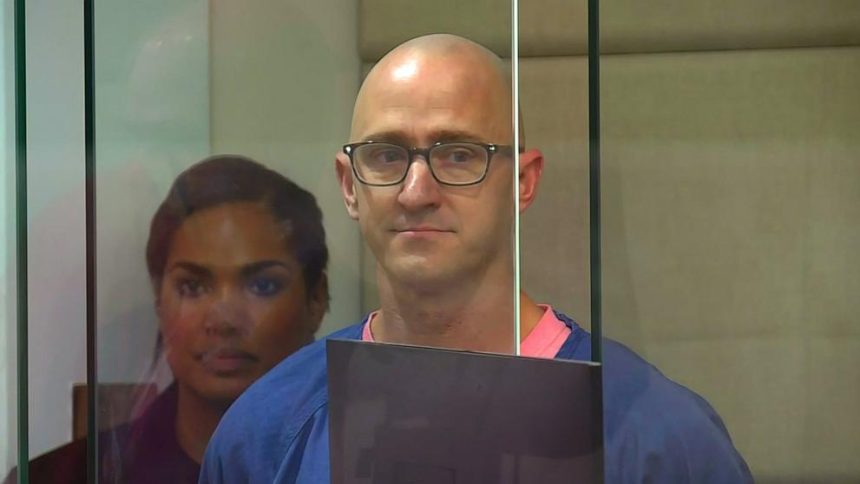The case of Joseph Emerson, a former Alaska Airlines pilot who shocked the aviation world with his mid-air sabotage attempt, has now reached a turning point. With his recent guilty plea in federal court, the aviation industry, passengers, and legal experts are once again confronted with difficult questions about mental health, airline safety protocols, and accountability within high-pressure professions. The Joseph Emerson guilty plea is not just a headline—it is a story layered with human struggle, systemic oversight, and a reminder of how critical trust is in aviation. This article explores the incident in detail, traces the legal journey, evaluates industry implications, and provides expert commentary on what this case means for the future of aviation safety.
- The Man Behind the Guilty Plea
- The Mid-Air Incident That Shook Aviation
- The Legal Battle in Federal Court
- Mental Health in Aviation: A Silent Crisis
- Airline Safety Protocols and Lessons Learned
- Public Reaction and Passenger Trust
- Expert Commentary on the Guilty Plea
- The Road Ahead for Joseph Emerson
- FAQs
- Who is Joseph Emerson?
- What exactly did Joseph Emerson do on the flight?
- What charges did Emerson face in federal court?
- Why did Joseph Emerson plead guilty?
- What role did mental health play in the case?
- How has the aviation industry responded to this case?
- Conclusion
The Man Behind the Guilty Plea
Joseph David Emerson was not a rookie pilot. He had logged thousands of flying hours and built a respectable career with Alaska Airlines. Colleagues described him as skilled, dedicated, and deeply passionate about aviation. However, beneath the professional exterior, Emerson was grappling with intense personal and psychological battles. Reports revealed that he had experienced severe depression and was experimenting with hallucinogens prior to the flight sabotage attempt.
Mental health challenges within high-stress professions like aviation often remain hidden until they manifest in dangerous ways. Emerson’s story demonstrates how even highly trained professionals can be vulnerable when support systems and early interventions fail. His guilty plea in federal court is not only an admission of guilt but also an acknowledgment of these hidden struggles that can spiral into catastrophic outcomes.
The Mid-Air Incident That Shook Aviation
In October 2023, Emerson boarded a Horizon Air flight, operated on behalf of Alaska Airlines, not as a captain but as a jump seat passenger. During the flight, he allegedly attempted to disable the plane’s engines by pulling emergency shut-off handles in the cockpit. Quick action by the flight crew prevented disaster.
Passengers later recalled a tense atmosphere, though many did not realize the full extent of what was unfolding until after the plane safely landed. Flight attendants and pilots acted swiftly, subduing Emerson before he could cause irreparable harm. This incident highlighted the robustness of cockpit training but also raised urgent questions: how could someone with his background and access get so close to endangering lives?
The Joseph Emerson guilty plea is rooted in this pivotal event, where the potential consequences were not just career-ending but life-threatening for everyone aboard.
The Legal Battle in Federal Court
Federal prosecutors charged Emerson with attempted interference with a flight crew and attempted destruction of an aircraft—both severe felonies that carry long prison sentences. Initially, Emerson pleaded not guilty, setting the stage for a high-profile legal showdown. However, as evidence mounted and psychological evaluations were presented, his defense strategy evolved.
By entering a guilty plea, Emerson avoided a drawn-out trial but accepted responsibility for his actions. Legal experts note that this plea could influence sentencing by showing remorse and cooperation. Federal sentencing guidelines, however, leave little room for leniency in cases involving aviation sabotage.
The guilty plea also offers closure to passengers and the airline but raises another layer of debate: should justice lean more toward punishment or rehabilitation when mental health crises are at the root of dangerous behavior?
Mental Health in Aviation: A Silent Crisis
Aviation is one of the most regulated industries in the world, and pilots undergo rigorous medical and psychological evaluations. Yet, incidents like Emerson’s case reveal cracks in the system. Studies suggest that depression affects around 12.6% of pilots globally, but stigma often discourages them from seeking help.
Dr. Karen Mitchell, a clinical psychologist specializing in aviation, explains:
“Pilots often fear that admitting mental health struggles could end their careers. As a result, they remain silent until the problem escalates into a crisis. The Joseph Emerson case underscores the urgent need for confidential, stigma-free pathways for pilots to seek treatment without fearing job loss.”
This guilty plea highlights not just one man’s fall from grace but a systemic issue within aviation. Safety is paramount, but safety cannot exist without a workforce that is mentally sound and supported.
Airline Safety Protocols and Lessons Learned
Alaska Airlines and the Federal Aviation Administration (FAA) immediately launched internal reviews after the incident. Safety experts praised the cockpit crew’s swift response but acknowledged that prevention is better than reaction.
New conversations have emerged about:
-
Enhanced psychological evaluations for pilots and crew members.
-
Peer support programs where pilots can confidentially share struggles.
-
Real-time monitoring of unusual behavior among cockpit staff.
-
Policy changes that encourage mental health treatment without punitive career consequences.
The Joseph Emerson guilty plea serves as a reminder that aviation safety is more than mechanical reliability—it is also about human resilience and responsibility.
Public Reaction and Passenger Trust
Passenger trust is the bedrock of commercial aviation. For many travelers, the Emerson incident was terrifying because it shattered the assumption that cockpit personnel are always infallible protectors. Public reaction ranged from anger at Emerson’s recklessness to empathy for his mental health struggles.
Airlines now face the challenge of reassuring passengers. Industry leaders are working to emphasize the strength of cockpit teamwork, redundant safety systems, and the fact that the system worked as designed—the plane landed safely, and passengers were unharmed. Yet, rebuilding confidence is a delicate process.
Expert Commentary on the Guilty Plea
Legal and aviation experts alike are weighing in on the case. Aviation safety consultant Robert Hayes noted:
“This case will likely become a precedent in aviation law. It blends criminal responsibility with mental health considerations, which is unusual in the aviation context. The guilty plea sends a strong message: regardless of intent or personal struggles, endangering lives in the air carries severe consequences.”
Meanwhile, legal scholars argue that the plea may influence how future cases of in-flight disruptions are prosecuted, especially when mental illness is involved.
The Road Ahead for Joseph Emerson
While the guilty plea has provided a degree of closure, Emerson’s journey is far from over. Sentencing will determine how many years he spends behind bars, but rehabilitation and treatment will be critical components of his future.
His case may inspire broader reforms, encouraging the aviation industry to balance accountability with compassion. Emerson’s personal downfall may, ironically, serve as a catalyst for systemic improvements that prevent similar incidents in the future.
FAQs
Who is Joseph Emerson?
Joseph Emerson is a former Alaska Airlines pilot who attempted to sabotage a flight in October 2023 while riding in the cockpit jump seat. He has since entered a guilty plea in federal court for charges related to flight sabotage.
What exactly did Joseph Emerson do on the flight?
During the flight, Emerson allegedly attempted to shut down the plane’s engines by pulling the emergency shut-off handles. He was subdued by the crew before he could complete the act, and the flight landed safely.
What charges did Emerson face in federal court?
Emerson was charged with attempted interference with a flight crew and attempted destruction of an aircraft—serious federal crimes that carry the possibility of decades in prison.
Why did Joseph Emerson plead guilty?
After initially pleading not guilty, Emerson changed his plea. Experts believe this decision reflects acceptance of responsibility, potential legal strategy to reduce sentencing, and acknowledgment of the evidence against him.
What role did mental health play in the case?
Emerson reportedly struggled with depression and had experimented with hallucinogens before the incident. His case has sparked wider discussions about mental health challenges among pilots and the need for better support systems.
How has the aviation industry responded to this case?
Airlines and regulators have reviewed safety protocols, strengthened peer support programs, and emphasized the importance of mental health awareness. The incident also reinforced confidence in cockpit crew training and response systems.
Conclusion
The Joseph Emerson guilty plea is more than just a courtroom update—it is a case study in human vulnerability, systemic oversight, and aviation’s ongoing battle to balance safety with compassion. Emerson’s fall from the skies is both tragic and instructive, reminding us that behind every uniform is a human being carrying unseen struggles. For the aviation industry, the lesson is clear: safety must encompass not just machinery and protocols but also mental well-being. As Emerson awaits sentencing, his story may well drive reforms that protect both passengers and pilots in the future, ensuring that trust in the skies remains unshaken.








